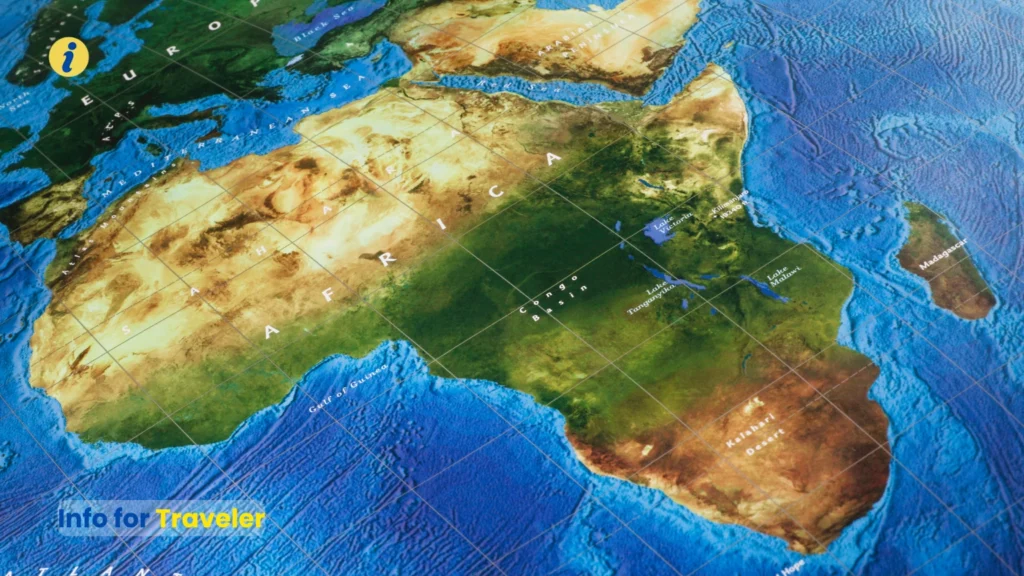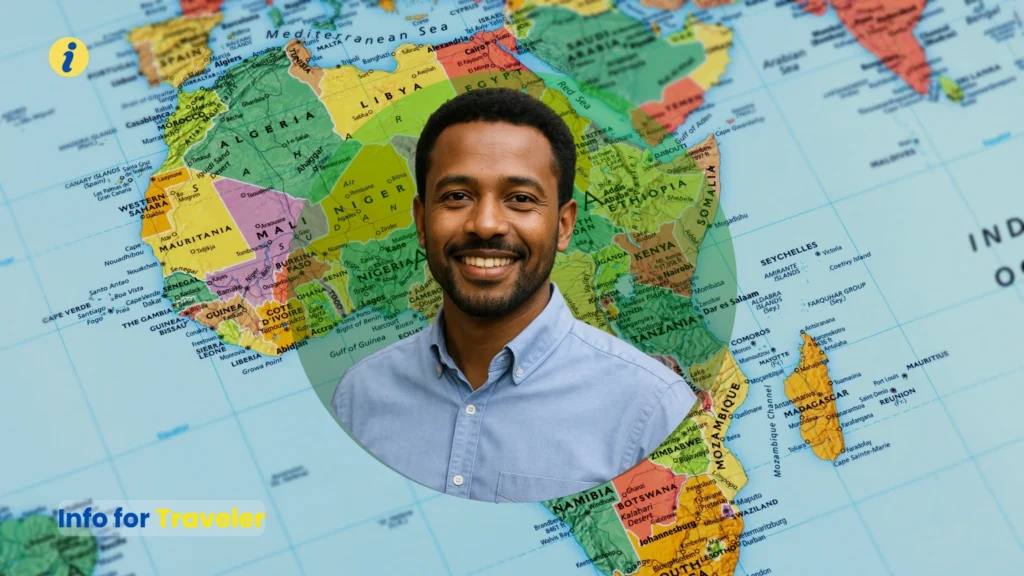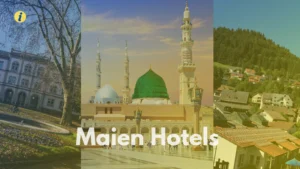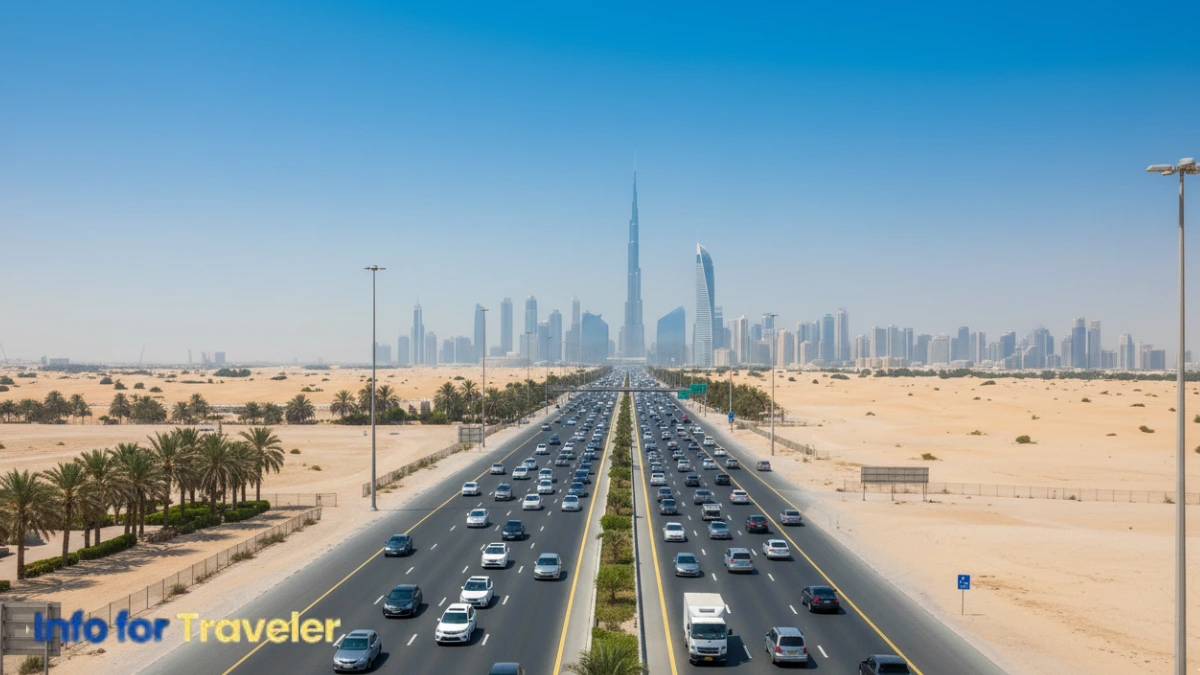Mariano Iduba is a Kenyan-born social entrepreneur and technology visionary who has transformed the lives of over 50,000 students across East Africa by building solar-powered learning hubs and training young people in cutting-edge tech skills like AI and blockchain.
A young boy in Nairobi, Kenya, spending his afternoons taking apart old radios and solar panels, not to break them, but to understand their secrets. That same curious child is now one of Africa’s most inspiring technology leaders, and his story will absolutely amaze you.
Here’s what makes Mariano different from other tech entrepreneurs. While many focus on creating the next expensive gadget, Mariano believes technology should be a friend to everyone, especially those who need it most. His mission is crystal clear: bring education and opportunities to remote villages where children have never even seen a computer.
You’re probably thinking, “That sounds impossible!” But here’s the thing, Mariano has already helped over 50,000 students across East Africa. His approach is beautifully simple: instead of building complicated solutions, he creates practical tools that work even in the most challenging places. Ready to discover how one person’s vision is literally lighting up entire communities? Let’s dive in!
Early Life and the Seeds of Innovation
Growing Up in Nairobi: Where Curiosity Met Reality
Let me paint you a picture of young Mariano Iduba in Nairobi, Kenya’s vibrant capital. While most kids his age were kicking footballs or playing video games, our future tech hero had a different hobby. He was completely fascinated by gadgets, but not in the way you might think. Instead of just using them, he wanted to crack their code.
Can you imagine your parents’ reaction when they found their radio in pieces on the kitchen table? That was just another Tuesday for the Iduba family! Mariano wasn’t being destructive, he was being a detective. He’d carefully take apart radios, study solar panels, and spend hours trying to figure out how electricity flowed through circuits.
The Lightbulb Moment That Changed Everything
Here’s where Mariano’s story gets really interesting. Growing up in Kenya, he witnessed something that broke his heart but fueled his determination. He saw families struggling without reliable electricity, parents couldn’t charge their phones, and children were forced to study by flickering candlelight after sunset.
Picture this scene: a bright student trying to read her textbook by the weak glow of a candle, squinting to make out the words. Meanwhile, in wealthy neighborhoods just a few miles away, kids had computers, internet, and all the educational resources they could dream of. This stark inequality planted a powerful seed in young Mariano’s mind.
That seed grew into an unshakeable belief: technology shouldn’t be a luxury for the wealthy, it should be a bridge that connects everyone to opportunities. This wasn’t just a nice idea for Mariano; it became his life’s mission.
Building GreenNet Solutions: Solar-Powered Learning Revolution
The Big Idea That Started Small
Now, let me tell you about Mariano’s first major breakthrough, and trust me, it’s going to blow your mind! When Mariano founded GreenNet Solutions, he had a revolutionary idea that seemed almost too simple: what if we could bring computers and the internet to remote villages using nothing but the power of the sun?
Think about it, most rural schools don’t have electricity, let alone internet connections. Traditional solutions would require expensive power lines and complex infrastructure that could cost millions. But Mariano thought differently. He asked himself: “Why not use solar energy to power learning hubs that work completely off the grid?”
How These Magic Learning Hubs Actually Work
Let me walk you through what makes these GreenNet hubs so special, because honestly, they’re like something out of a sci-fi movie! Each hub is essentially a complete digital classroom that runs entirely on solar power. Picture a small building equipped with computers, tablets, and high-speed internet, all powered by solar panels on the roof.
But here’s the really cool part: these aren’t just fancy computer labs dropped into villages. Each hub is designed specifically for local conditions. The computers can handle dust, heat, and power fluctuations. The internet connection works even in remote areas with weak signals. And everything is built to last in challenging African climates.
The Numbers That Tell an Amazing Story
Ready for some mind-blowing statistics? GreenNet Solutions has now built over 100 of these learning hubs across East Africa. But wait, it gets better, these hubs are currently serving more than 50,000 students! Can you imagine 50,000 young people who now have access to the same digital opportunities as kids in major cities?
Let me put this in perspective for you. Many of these students had never touched a computer before their first day at a GreenNet hub. Now they’re learning coding, researching school projects online, and even connecting with students from other countries. We’re talking about children whose lives have been completely transformed by access to technology and education.
Why Community Partnership Makes All the Difference
Here’s what makes Mariano truly special as a leader, he doesn’t just drop technology into communities and walk away. Instead, he works hand-in-hand with local teachers, parents, and community leaders to ensure every hub meets real needs.
Before building any hub, Mariano’s team spends weeks in the community, listening to what people actually want and need. They train local teachers to use the technology, involve parents in the planning process, and make sure the community feels ownership over their learning center. This approach has been crucial to the long-term success of these projects.
CodeRoot Africa: Nurturing the Next Generation of Tech Leaders

Teaching Tomorrow’s Skills Today
Now let’s talk about Mariano’s second game-changing project, CodeRoot Africa. You know how they say “give a person a fish, and you feed them for a day; teach them to fish, and you feed them for a lifetime”? Well, Mariano took this wisdom and applied it to technology education in a brilliant way.
He realized that while GreenNet hubs were giving students access to technology, Africa needed something more: young people who could actually build and create technology themselves. So he co-founded CodeRoot Africa, a nonprofit with an ambitious mission, teaching African youth the hottest skills in tech, including artificial intelligence, blockchain, and data science.
Real Skills for Real Careers
Here’s what I love about CodeRoot’s approach, it’s not just theoretical learning. These aren’t boring classroom lectures about computer science. Instead, students dive into hands-on projects that solve actual problems in their own communities. Imagine learning to code by building an app that helps local farmers track weather patterns, or mastering data science by analyzing health trends in your region.
The organization runs intensive workshops, coding boot camps, and mentorship programs across the continent. Students don’t just learn how to write code, they learn to think like innovators and entrepreneurs. They discover how to spot problems in their communities and use technology to solve them.
Success Stories That Inspire
Want to hear something incredible? Many CodeRoot graduates have gone on to start their own tech companies, land jobs with international organizations, or become leaders in their fields. We’re talking about young Africans who are now competing successfully in the global technology market, all because they got the right training and support at the right time.
One graduate I heard about created a mobile app that helps pregnant women in rural areas access prenatal care advice. Another built a platform that connects small-scale farmers directly with urban buyers, eliminating middlemen and increasing profits. These aren’t just feel-good stories, they’re proof that Mariano’s vision is creating real, lasting change.
A Human-Centered Approach to Innovation
Why Mariano’s Method Works When Others Fail
Let me share something with you that makes Mariano Iduba absolutely unique in the tech world. While most entrepreneurs get excited about the latest gadgets and cutting-edge features, Mariano starts every project by asking a simple question: “How will this actually help people live better lives?”
This might sound obvious, but trust me, it’s revolutionary in the technology industry. Too many tech solutions are created in fancy offices by people who’ve never experienced the problems they’re trying to solve. Mariano does things differently, he starts by living and working in the communities he wants to help.
The Power of Listening First, Building Second
Here’s how Mariano’s process actually works, and it’s fascinating. Before building any new project, he and his team spend weeks (sometimes months) in target communities. They don’t come with predetermined solutions. Instead, they come with open ears and curious hearts.
Picture Mariano sitting in a village school, chatting with teachers about their biggest challenges. Or imagine him talking to parents about their dreams for their children’s education. He listens to students share their frustrations with studying by candlelight. Only after truly understanding these real-world needs does he start thinking about technological solutions.
Making Technology Feel Like Home
What I find most impressive about Mariano’s approach is how he ensures his technology solutions feel culturally relevant and locally owned. He doesn’t believe in imposing Western-style education or foreign technologies on African communities. Instead, he looks for ways to enhance existing traditions and strengthen community structures.
For example, in communities where storytelling is a important cultural tradition, GreenNet hubs incorporate digital storytelling tools that allow elders to record their stories for future generations. In agricultural areas, the technology includes farming apps and weather tracking tools that support local farming practices rather than replacing them.
Advisory Work and Global Influence
When World Leaders Ask for Mariano’s Advice
Here’s something that might surprise you, some of the world’s most powerful organizations regularly seek out Mariano Iduba’s advice. We’re talking about institutions like the African Union, World Bank, and UNICEF. These organizations, with billions of dollars in resources, want to hear what this former radio-tinkering kid from Nairobi has to say. Why? Because his grassroots experience gives him insights that boardroom executives simply can’t match.
Think about it this way: policy makers can create beautiful development strategies on paper, but Mariano knows what actually works in real villages with real people. When these organizations are designing programs to help African communities, they need someone who’s been there, done that, and has the track record to prove it.
Shaping Policy from the Ground Up
What makes Mariano’s advisory role so valuable is his unique perspective. Most policy advisors come from academic backgrounds or government experience. Mariano brings something different, he’s actually built successful programs that work in challenging conditions, and he understands the daily realities of the communities these policies are meant to help.
When Mariano advises on ethical digital development, he’s not speaking from theory, he’s sharing lessons learned from deploying technology in over 100 communities. When he talks about inclusive policy frameworks, he’s drawing from real conversations with thousands of African students, teachers, and parents.
His influence extends beyond just African policy. As governments around the world grapple with questions about AI ethics, digital privacy, and inclusive innovation, Mariano’s community-first approach offers a valuable model for responsible technology development.
Future Vision: EduGrid and Digital Opportunity Zones
EduGrid: The AI Teacher That Never Gets Tired
Get ready to have your mind blown, because Mariano’s next project sounds like something from a futuristic movie! He’s currently developing something called EduGrid, an artificial intelligence-powered learning platform that adapts to each individual student’s learning pace and style. But here’s the kicker, it’s designed to work perfectly even with limited internet connectivity.
Let me explain why this is so revolutionary. You know how some people learn better with pictures, others need hands-on activities, and some prefer reading? Well, EduGrid uses smart AI technology to figure out exactly how each student learns best, then adjusts its teaching methods accordingly. It’s like having a personalized tutor for every single student, even in the most remote villages.
Digital Opportunity Zones: Bringing Silicon Valley to Rural Africa
Now, here’s where Mariano’s vision gets really exciting. He’s planning to create what he calls “digital opportunity zones”, areas where young people have access to all the digital tools and training they need to build successful careers right in their home communities.
Picture this: instead of young Africans having to leave their villages and families to find opportunities in big cities or foreign countries, they could become successful entrepreneurs, developers, or digital innovators while staying close to home. These zones would provide high-speed internet, advanced equipment, mentorship programs, and connections to global markets.
Expansion Plans That Could Change the World
Mariano isn’t thinking small when it comes to expansion. His team is actively working to bring the GreenNet Solutions model to West Africa and South Asia. We’re potentially talking about helping millions more students access quality education through solar-powered learning hubs.
But what excites me most about these expansion plans is how they’ll test whether Mariano’s community-focused approach can work across different cultures and contexts. If successful, his model could become a blueprint for educational development worldwide.
The Broader Impact: Technology for Social Good
Proving That Business Can Have a Heart
Let me share something powerful with you about Mariano’s work, he’s proving that you don’t have to choose between making money and making a difference. While much of the tech industry focuses on creating products for wealthy consumers who can afford the latest gadgets, Mariano has built a successful business model around serving the world’s most underserved communities.
This is absolutely revolutionary in the business world. Traditional thinking suggests that social good projects need constant charity funding to survive. But Mariano has created sustainable enterprises that generate revenue while solving critical social problems. GreenNet Solutions charges fees for their services, but they’re structured so that communities can afford them while the company remains profitable.
The Ripple Effect That Keeps Growing
Here’s what I find most beautiful about Mariano’s impact, it doesn’t stop with the direct beneficiaries. Picture this: a student learns computer skills at a GreenNet hub, then goes home and teaches her younger siblings. A CodeRoot graduate starts a tech company that employs dozens of people in his community. A teacher trained on GreenNet technology begins integrating digital tools into traditional lessons.
This multiplier effect means that Mariano’s impact grows exponentially over time. Every person he directly helps becomes a potential teacher, mentor, or innovator who can help others. It’s like throwing a stone into a calm pond, the ripples keep spreading outward, touching more and more lives.
Inspiring a New Generation of African Entrepreneurs
Perhaps most importantly, Mariano’s success is inspiring other African entrepreneurs to focus on social innovation. Young business leaders across the continent are looking at his model and thinking, “If Mariano can build successful companies while solving social problems, so can I!”
This shift in mindset could transform Africa’s entire entrepreneurial landscape. Instead of just copying business models from Silicon Valley or Europe, African entrepreneurs are increasingly focused on developing local solutions that address local challenges while connecting to global opportunities.
Recognition and Thought Leadership
From Unknown Tinkerer to Global Influencer
It’s incredible to think that the same curious kid who once dismantled radios in Nairobi is now recognized as one of Africa’s leading voices in technology and social innovation. Mariano’s journey from local entrepreneur to global thought leader shows what happens when genuine impact meets authentic storytelling.
Today, Mariano is invited to speak at major conferences, contribute to policy discussions, and share his insights with audiences around the world. But what I love about his approach to recognition is that he always brings the conversation back to the communities he serves and the real people whose lives have been changed by technology.
Ideas That Influence How Others Think
Mariano’s thought leadership extends far beyond just promoting his own projects. He writes and speaks regularly about the broader challenges of using technology for development, the critical importance of ethical innovation, and the need for inclusive growth in Africa’s rapidly expanding digital economy.
His ideas are particularly influential because they come from real experience rather than academic theory. When Mariano talks about the challenges of deploying technology in rural areas, he’s drawing from hundreds of actual deployments. When he discusses community engagement strategies, he’s sharing lessons learned from working with thousands of families across East Africa.
Building Networks That Amplify Impact
As Mariano’s recognition has grown, so has his ability to attract resources, partners, and supporters to his mission. Investors who might never have considered funding social enterprises in rural Africa are now eager to support his work because they’ve seen the proven results and sustainable business models.
This growing network of support creates a virtuous cycle, more resources enable bigger projects, bigger projects create more impact, and more impact attracts even more supporters who want to be part of the success story.
Challenges and Lessons Learned
The Reality Behind the Success Stories
Let me be honest with you, while Mariano’s achievements are incredible, his journey hasn’t been a smooth ride to success. Building technology solutions in resource-constrained environments means facing constant challenges that would make most entrepreneurs give up. Solar panels break down in harsh weather, internet connections fail at crucial moments, and sometimes communities resist change because they’ve been let down by failed projects before.
I remember reading about one particularly challenging period when a series of equipment failures threatened to shut down several GreenNet hubs simultaneously. Instead of panicking, Mariano and his team used this crisis as a learning opportunity, redesigning their systems to be more resilient and developing local repair networks that could respond quickly to future problems.
Hard-Won Wisdom About Sustainability
One of the most important lessons Mariano has learned is that sustainability isn’t just about using solar power, it’s about creating projects that can thrive long after the initial excitement fades. Too many well-intentioned development projects fail because they depend entirely on external funding or foreign expertise.
Mariano’s approach is different because he focuses on three types of sustainability from day one: financial sustainability (projects that generate enough revenue to maintain themselves), social sustainability (strong community ownership and involvement), and environmental sustainability (solutions that work with nature rather than against it).
The Power of Starting Small and Growing Organically
Another crucial lesson from Mariano’s experience is the value of starting small and scaling gradually. Early in his career, he was tempted by investors who wanted him to rapidly expand across entire countries. But Mariano wisely chose to perfect his model in small communities first, learning and adapting before taking on bigger challenges.
This patient approach has paid off tremendously. Each new GreenNet hub benefits from lessons learned in previous installations. Each CodeRoot program is better than the last because of feedback from earlier participants. By prioritizing quality over speed, Mariano has built a foundation for sustainable, long-term growth.
Conclusion: A Vision for Africa’s Future
The Kid Who Took Apart Radios Is Now Taking Apart Inequality
As we reach the end of Mariano Iduba’s incredible story, I want you to think back to where we started, with that curious child in Nairobi, dismantling radios and solar panels to understand their secrets. Today, that same curiosity and determination is dismantling something much more important: the barriers that prevent African communities from accessing education and economic opportunities.
Mariano’s journey proves something powerful about the nature of innovation. The most transformative solutions often don’t come from fancy research labs or billion-dollar companies. Instead, they come from people who deeply understand real problems because they’ve lived them, and who refuse to accept that those problems are unsolvable.
Numbers That Tell a Story of Hope
When we look at the current impact, over 100 solar-powered learning hubs, more than 50,000 students served, countless young people trained in cutting-edge technology skills, we’re seeing just the beginning. These numbers represent individual stories of transformation: children who can now dream of careers in technology, communities that are no longer isolated from global opportunities, and young entrepreneurs who are building the solutions Africa needs.
But what excites me most isn’t what Mariano has already accomplished, it’s the trajectory he’s set in motion. With EduGrid’s AI-powered education platform and the expansion of digital opportunity zones, we’re looking at a future where geographic location no longer determines educational opportunity.
A Model for the World
Perhaps most importantly, Mariano Iduba has demonstrated a different approach to development, one that starts with communities rather than corporations, that builds on local strengths rather than imposing external solutions, and that creates sustainable change rather than temporary fixes.
His success shows that Africa’s future doesn’t lie in copying solutions from Silicon Valley or Europe. Instead, it lies in developing homegrown innovations that address local challenges while connecting to global opportunities. This approach could serve as a model not just for other African entrepreneurs, but for social innovators worldwide.
The Continuing Adventure
As Mariano continues expanding his work across Africa and into South Asia, he’s proving that one person’s vision really can light up entire communities and change thousands of lives. His story reminds us that the most powerful technologies aren’t necessarily the most complex, they’re the ones that serve humanity with purpose, compassion, and unwavering commitment to making the world a better place for everyone.
The boy who once wondered how radios worked has grown up to show the world how hope works, how community works, and how innovation works when it’s guided by genuine care for human flourishing. That’s the real magic behind Mariano Iduba’s incredible journey, and it’s just getting started. current numbers, 100 learning hubs, 50,000 students, and countless young people trained in coding and entrepreneurship.
As Mariano continues to expand his work across Africa and beyond, his vision of digital opportunity zones and AI-powered education platforms offers hope for millions of young people who currently lack access to quality education and economic opportunities. His success demonstrates that Africa’s future lies not in copying solutions from elsewhere, but in developing homegrown innovations that address local challenges while connecting to global opportunities.
Mariano Iduba’s journey reminds us that the most powerful innovations often come from the simplest insights: that everyone deserves access to education and opportunity, that technology should serve humanity rather than the other way around, and that sustainable change happens when communities are empowered to shape their own futures.










